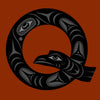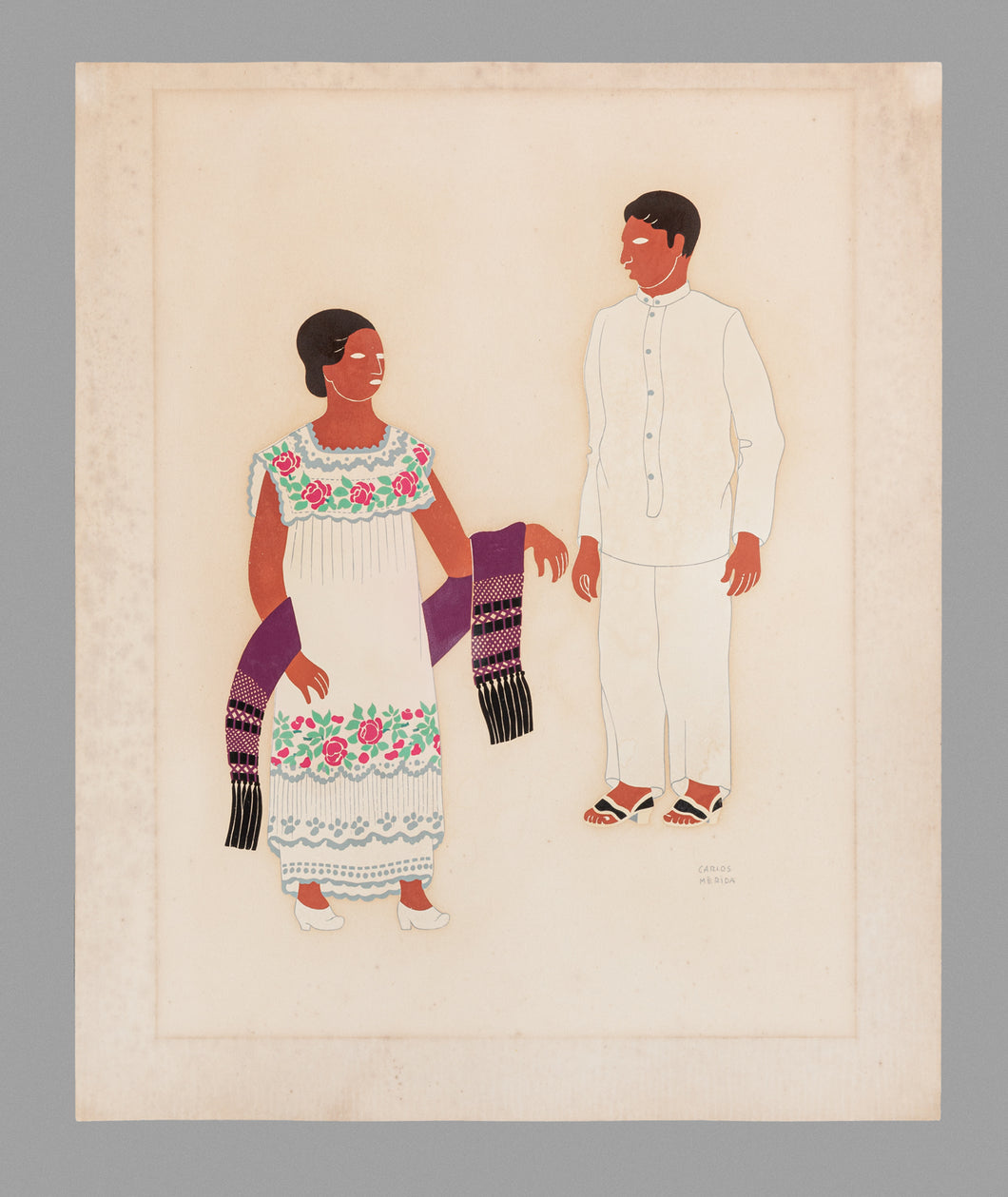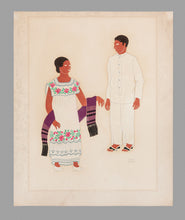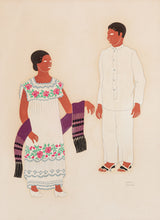Mestizos of the State of Yucatan, 1941 by Carlos Merida (1895-1984)
Regular price
$150.00
Sale
Mestizos of the State of Yucatan, 1941
From the Portfolio Mexican Costumes by Carlos Merida (1895-1984)
serigraph
16" high x 13" wide paper size
Condition: this print has been cleaned and stabilized by paper restoration expert Elizabeth Chambers, Portland, OR
Text from Portfolio:
"To this day the Mestizos of Yucatan, the most direct descendants of the ancient Mayans, preserve a colorful local culture. Beautiful examples of costume art are to be seen in Mérida and in Motul, the source of Plate 25.
For daily use the Mestiza, as the woman of Yucatan is called, wears a plain blouse and skirt of un- bleached cotton, but for special occasions she dons a blouse of finer cloth, white embellished with floral embroidery and lace. Her best shoes are of satin, generally white and sometimes embroidered. In former days all embroidery was hand work but now there is much of machine origin and of course the Iresults are less fine. Rebozos are worn but they are manufactured outside the state.
The Mestiza combs her hair back into a chignon called chango or tuch in Maya. This style becomes the handsome racial features of these women.
The men of this tropical country are impeccably white, wearing starched shirts and ankle-length trousers. The high heeled shoes are called alpargata." - Carlos Merida
Guatemalan artist Carlos Mérida is best known for creating Modernist abstract art that integrated Latin American culture with 20th-century European painting. Born in 1891 in Guatemala City, Guatemala, Mérida was of Spanish and Kʼicheʼ Maya heritage, which would later become a significant influence in his work. He studied music as a child, but after experiencing hearing loss, began to study painting instead.
In 1910, at the age of 19, Mérida presented work in his first art exhibition. That same year, he moved to Paris, where he lived for four years, and met and worked with Pablo Picasso, Piet Mondrian, and Amedeo Modigliani, as well as several prominent Latin American artists residing in Europe at that time.
In 1919, Mérida returned to Latin America and lived in Mexico as the Mexican Revolution drew to an end. There, he worked with Diego Rivera and Rufino Tamayo.
In the decades that followed, Mérida expanded his practice to include graphic works, sketches, tapestries, stage sets and costumes for dance performances. He died in 1984 in Mexico City at the age of 93.
Mérida’s extensive and varied body of work fused aspects of Surrealism, Muralism, Cubism, and European Modernism with elements of pre-Columbian Mayan culture. He was known for integrating figurative elements into his abstract art, such as colorful organic and geometric representations of clusters of people, and employed a variety of media, including watercolor, oil, gouache and pencil, and parchment and plastic. He was the recipient of several prestigious awards, namely the Order of the Quetzal (Guatemala’s highest order) and the Order of the Aztec Eagle (Mexico’s highest order given to foreigners).



